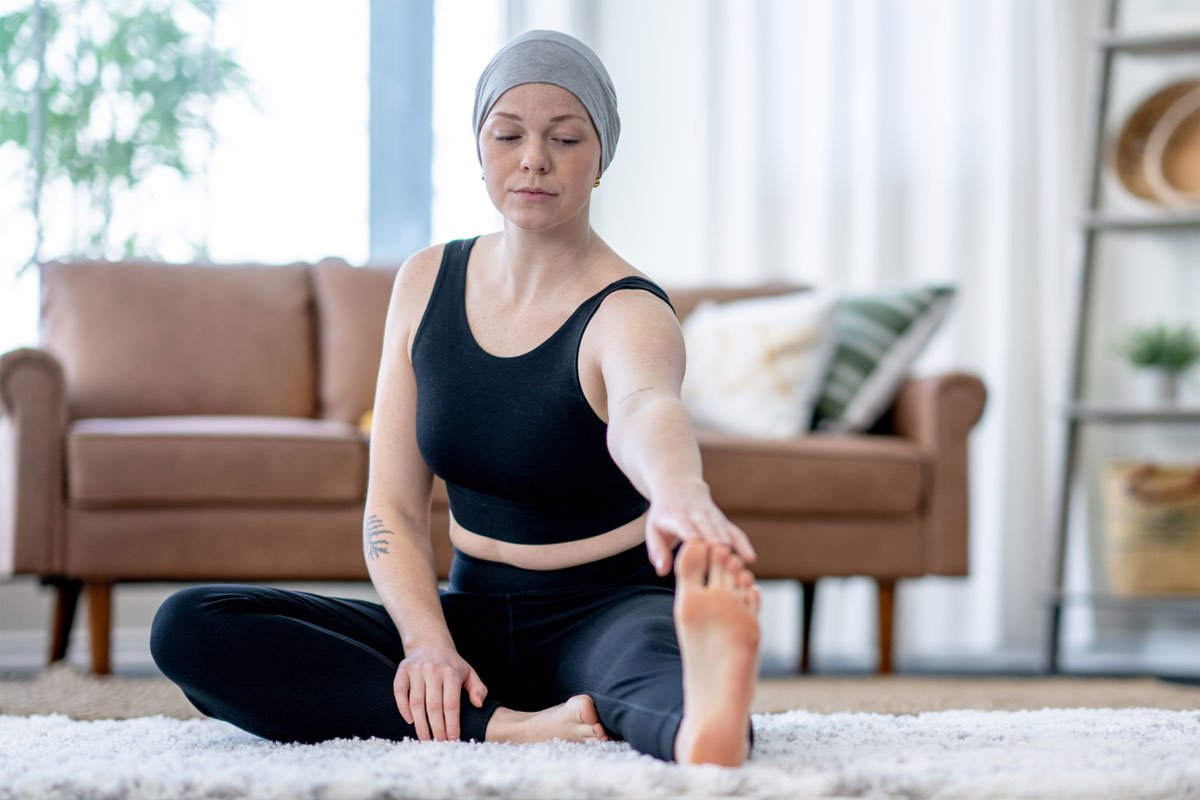Physical activity and exercise are crucial components of cancer care, providing numerous benefits that can improve treatment outcomes and enhance overall well-being. This article dives into the importance of exercise for cancer patients, outlines effective exercise strategies, and provides practical tips for integrating physical activity into daily routines.
Importance of Exercise in Cancer Care
Exercise plays a vital role in cancer care for several reasons:
- Boosting Physical Health
- Regular physical activity helps maintain muscle strength, improve cardiovascular health, and enhance overall physical fitness.
- Enhancing Mental Well-being
- Exercise can reduce symptoms of anxiety and depression, improve mood, and boost self-esteem, contributing to better mental health.
- Managing Treatment Side Effects
- Physical activity can help manage side effects such as fatigue, nausea, and pain, making it easier to cope with treatment.
- Improving Treatment Outcomes
- Research shows that exercise can improve treatment efficacy and reduce the risk of cancer recurrence.
- Enhancing Quality of Life
- Regular exercise can lead to better sleep, increased energy levels, and improved quality of life.
Types of Exercise for Cancer Patients
Cancer patients can benefit from various types of exercise, each offering unique advantages:
- Aerobic Exercise
- Activities such as walking, jogging, swimming, and cycling improve cardiovascular health and boost energy levels. Aim for at least 150 minutes of moderate aerobic exercise per week.
- Strength Training
- Resistance exercises using weights, resistance bands, or body weight help maintain muscle mass and bone density. Include strength training exercises at least two days per week.
- Flexibility and Stretching
- Stretching exercises and activities like yoga enhance flexibility, reduce stiffness, and improve range of motion. Stretching can be done daily.
- Balance Exercises
- Balance exercises, such as standing on one foot or using a balance board, help prevent falls and improve stability. Incorporate balance exercises into your routine a few times a week.
Creating an Exercise Plan
Creating a personalized exercise plan involves considering individual health conditions, treatment status, and fitness levels. Here are some steps to get started:
- Consult Your Healthcare Team
- Before starting any exercise program, consult with your oncologist or healthcare team to ensure it is safe and appropriate for your specific condition.
- Set Realistic Goals
- Set achievable goals that consider your current fitness level and treatment schedule. Start with short, manageable sessions and gradually increase the duration and intensity.
- Listen to Your Body
- Pay attention to how your body responds to exercise. If you experience pain, dizziness, or extreme fatigue, stop the activity and consult your healthcare provider.
- Mix It Up
- Incorporate a variety of exercises to keep your routine interesting and work different muscle groups. Balance aerobic, strength, flexibility, and balance exercises.
- Stay Consistent
- Consistency is key. Aim to include some form of physical activity in your daily routine, even if it’s a short walk or gentle stretching.
Practical Tips for Exercising During Cancer Treatment
- Start Slowly
- Begin with low-intensity exercises and gradually increase as your strength and endurance improve.
- Find Enjoyable Activities
- Choose activities you enjoy to make exercise more engaging and sustainable.
- Incorporate Movement into Daily Life
- Simple activities like gardening, cleaning, or taking the stairs can contribute to your daily exercise goals.
- Use a Buddy System
- Exercising with a friend or family member can provide motivation and make the activity more enjoyable.
- Monitor Your Progress
- Keep a journal to track your exercise activities, how you feel, and any improvements in your physical and mental health.
Overcoming Common Barriers to Exercise
Cancer patients may face several barriers to exercise, but with the right strategies, these can be overcome:
- Fatigue
- Exercise can help combat fatigue by boosting energy levels. Start with short sessions and gradually increase the duration as you feel more energized.
- Pain
- Choose low-impact exercises that are gentle on the joints. Activities like swimming or cycling can be less painful than high-impact exercises.
- Nausea
- Exercise in a well-ventilated area and choose activities that don’t require bending over. Light exercises like walking can help reduce nausea.
- Lack of Motivation
- Set small, achievable goals and reward yourself for meeting them. Joining a support group or finding an exercise buddy can also boost motivation.
- Time Constraints
- Integrate exercise into your daily routine by doing short, frequent sessions. Even 10 minutes of physical activity a few times a day can be beneficial.
Real-Life Stories: Exercise in Cancer Recovery
Hearing from individuals who have successfully integrated exercise into their cancer recovery can provide inspiration and practical insights:
- Jane’s Journey
- Jane, a breast cancer survivor, shares how daily walks and yoga helped her manage fatigue and improve her mood during treatment.
- Mike’s Experience
- Mike, who battled prostate cancer, emphasizes the importance of strength training in maintaining muscle mass and physical strength.
- Sarah’s Strategy
- Sarah, diagnosed with ovarian cancer, found that swimming was a gentle yet effective way to stay active and manage treatment side effects.
Frequently Asked Questions
Yes, many cancer patients can exercise during treatment, but it’s important to consult with a healthcare provider to ensure the exercise plan is safe and appropriate for their specific condition and treatment status.
A combination of aerobic exercises (like walking or swimming), strength training (using weights or resistance bands), flexibility exercises (such as yoga or stretching), and balance exercises (like standing on one foot) is beneficial for cancer patients.
Cancer patients should aim for at least 150 minutes of moderate aerobic exercise per week, along with strength training exercises at least two days per week. Flexibility and balance exercises can be done daily.
Exercise can help manage side effects such as fatigue, nausea, pain, and depression. It improves physical strength, enhances mood, boosts energy levels, and can lead to better treatment outcomes.
If cancer patients experience pain during exercise, they should stop the activity and consult their healthcare provider. Low-impact exercises like swimming or cycling may be less painful and still provide benefits.
Yes, research shows that regular exercise can improve cancer treatment outcomes by enhancing physical fitness, boosting the immune system, and reducing the risk of cancer recurrence.

Liam Smith is passionate to cancer awareness and education, dedicated to providing support and inspiration for those affected by the disease. With a background in healthcare and a deep understanding of the emotional and physical challenges faced by cancer patients and their families, Liam shares valuable insights, coping strategies, and the latest advancements in treatment.

